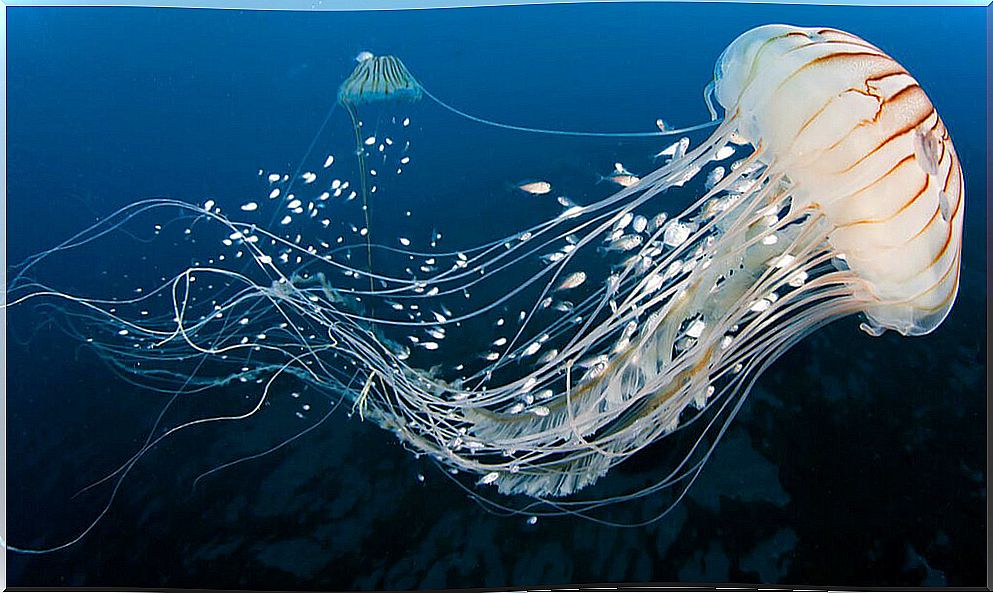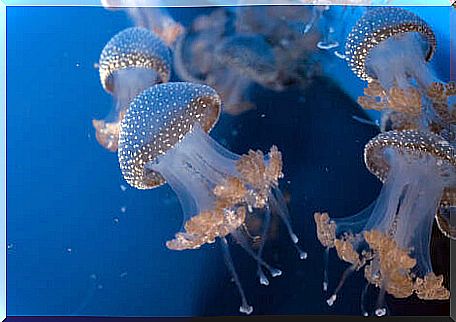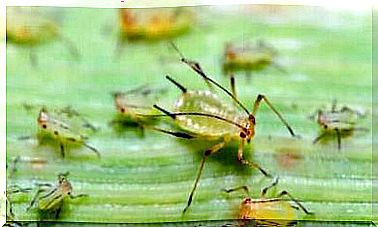How Do Jellyfish Release Poison?

If you’ve ever visited the shores of the Mediterranean Sea, you’ve certainly witnessed – or taken – a bite from a marine animal. Ever wonder how jellyfish release poison? The physiological mechanism of this mechanism is more curious than one might imagine.
If you’re reading these lines, you’re definitely interested in this question, as jellyfish are largely unknown, despite their proximity to humans. Don’t miss what’s next.
The jellyfish toxins
Jellyfish have been on Earth for more than 600 million years, in part because they didn’t have to adapt much. Their primitive nervous system and anatomical simplicity allow them to exist almost passively: they let themselves be carried away by currents and their food usually ends up falling on their tentacles by chance.
However, the complexity of these creatures lies in their method of defense – and hunting: the poison. Although it is difficult to extract the venom from a jellyfish, over the years it has been possible to identify certain common toxins produced by these invertebrates. Some of them are as follows:
- Hypnokine: This neurotoxin causes drowsiness, muscle paralysis, and respiratory arrest. Furthermore, it has anesthetic properties.
- Thalassin: This toxin is one of the most common that can be found. It produces the familiar urticaria, but at higher doses it causes muscle paralysis and even death.
- Congestin: affects the digestive system causing frequent vomiting, diarrhea and severe abdominal pain, and even breathing problems and a drop in blood pressure.
Now that you know what substances can be inoculated, it’s time to find out how jellyfish release poison. Like all animals, no matter how simple they seem, they always have some mechanism whose specialization is incredible to be studied.

How do jellyfish release poison?
How does such a simple and primitive animal survive in seas inhabited by predators? The secret of its evolutionary success lies in its defense and, at the same time, hunting mechanism: exocytosis – the release of cells to the outside – is the main weapon and trap of jellyfish.
The cnidarians, the family of anemones, corals, and jellyfish, have a type of sensory cell called cnidocytes. To give you an idea, these cells are like blowguns: they have several cytoplasmic organelles called cnids, with a venom capsule attached to a filament, which is fired when it comes in contact with the jellyfish’s surface.
Thus, when a prey or predator touches the surface or tentacles of the jellyfish, the cnidocytes are fired, microscopically entering the skin of its prey to inoculate the venom into the bloodstream. Once the cnids are discharged, the cell is reabsorbed and replaced by another cnidocyte.
It takes just 3 milliseconds for the cnidocyte to release the venom when it comes in contact with the ectoderm – the outermost part – of the jellyfish. It is one of the fastest known exocytosis processes to date.
Some jellyfish can contain up to 10 different types of toxins. However, its potential to harm the organism will depend not only on the potency of the toxin, but also on the amount of venom inoculated in relation to the size of the body.
What to do when touching a jellyfish?
Some Mediterranean jellyfish, such as Pelagia noctiluca, Rhizostoma pulmo or Carybdea marsupialis , are classified as medium-high toxicity species. In general, when you avoid swimming in the sea as you approach shore, there’s no reason to be a problem, but sometimes a solitary jellyfish accidentally touches a human.
As the cnidocyte passes through the skin, the first thing to know is that you should not scratch the area: otherwise, cnids that have become attached to the skin will also enter the bloodstream. The main care is to clean the area with plenty of sea water and go to a medical center.

Some home remedies recommend urine to relieve swelling, but vinegar is much more recommended. In any case, and especially with people who may be allergic to jellyfish toxins, it is best to see a doctor. These invertebrates are fascinating, but it’s best to admire them from afar.









